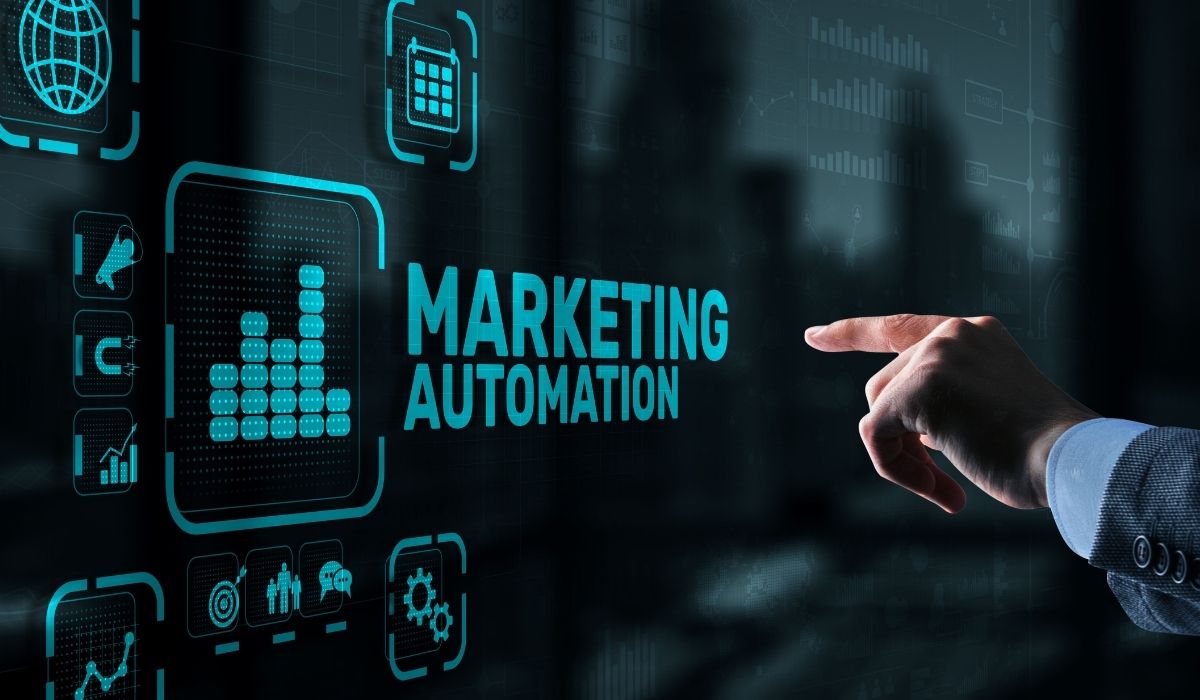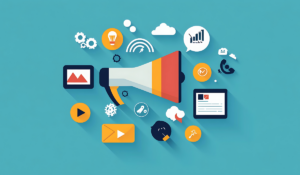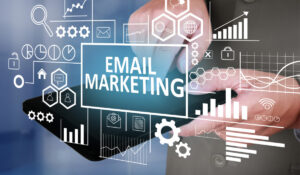Even though social media platforms like Instagram and Facebook seem to be everywhere today, there’s one marketing tool that still works wonders—email.
Yes, that good old inbox is still one of the best ways to talk to your audience directly.
Why is email marketing still powerful? Because it feels personal. When done right, it allows you to speak to your customers one-on-one, without shouting into the crowd like on social media.
It’s affordable, easy to manage, and you can scale it up without losing that personal touch.
In this article, we’ll walk you through:
- What email marketing automation actually means
- Why it’s useful for your business
- Simple email workflows you can use
- Best practices to follow
- And some real-life examples to get your creative juices flowing
What Is Email Marketing Automation?
Imagine if every time someone did something on your website—like signing up for your newsletter or buying a product—you had to sit down and send them a new email yourself.
That would be exhausting, right?
Now imagine a system that does all of that for you—automatically. That’s what email marketing automation is.
It’s like having a smart helper that watches what your customers do and sends them the right message at just the right time. For example:
- When someone signs up for your newsletter, they automatically get a friendly “Welcome!” email.
- When someone adds a product to their cart but doesn’t buy it, they receive a gentle reminder to come back and finish the purchase.
You don’t have to lift a finger after setting it up. The system does the work in the background.
Benefits of Email Marketing Automation

Let’s take a closer look at why this tool is a favorite among businesses of all sizes:
✅ 1. Personalization and Targeting
People love to feel special. And email automation helps you do just that.
Let’s say someone visited your website and looked at running shoes.
Instead of sending them a random email about sandals, your automation tool can send them info about running shoes, customer reviews, or even a special discount.
This makes your emails feel like they were written just for that one person.
And believe it or not, research shows that 71% of people get annoyed when the shopping experience isn’t personalized.
Automation helps you avoid that problem.
You can divide your audience into different groups (this is called “segmenting”) and send each group messages that match their interests and needs.
✅ 2. Save Time and Resources
Time is money, right?
Without automation, you or your team would need to manually write and send hundreds (maybe thousands) of emails every month. That’s a lot of work.
But with automation:
- You set it up once.
- The system keeps sending those emails to the right people based on their behavior.
- You get to spend more time on planning and creativity.
Most email platforms also offer ready-to-use templates and tools that make your job even easier.
✅ 3. Scale Your Campaigns Easily
Whether you have 100 customers or 100,000, automation makes it easy to reach all of them.
Without automation, the more your business grows, the harder it becomes to manage. But with automation:
- You can run multiple campaigns at the same time.
- You can send different emails to different people based on what they like, what they bought, or how often they visit your site.
You can grow your business without growing your workload.
Email Marketing Automation Best Practices
Before you jump in and start automating everything, there are a few important tips to make sure your efforts are successful.
📌 1. Define Your Goals and Objectives
You shouldn’t just send emails because you can.
You should send emails with a clear purpose. What do you want your emails to do?
Here’s a simple method called SMART goals to help you stay focused:
| SMART Goals | Description |
| Specific | Know exactly what you want to achieve |
| Measurable | Track your success with numbers like open rates or click rates |
| Achievable | Make sure your goal is realistic |
| Relevant | Make it match your business needs |
| Time-bound | Set a deadline to reach your goal |
For example, if your goal is to increase online sales, your automated emails should help move people closer to making a purchase.
📌 2. Don’t Automate Everything
Just because you can automate something doesn’t mean you should.
Automation works best when it supports your business goals and improves customer experience.
Mistakes to avoid:
- Don’t automate broken or confusing processes—it just makes things worse faster.
- Don’t make your workflows too complicated—they can become hard to manage.
- Make sure all your tools work well together—poor integration can break your email flows.
- Don’t forget the human touch—some things still need a personal touch.
Start with simple workflows like a welcome email or a cart reminder. Test what works, and then build more as you go.
What Are Automated Email Workflows?
Think of a workflow as your digital assistant that reacts when someone takes a specific action.
For example:
- A person signs up for your email list 👉 they receive a welcome series.
- They download an eBook 👉 they get follow-up emails with more helpful resources.
- They put items in their cart but don’t buy 👉 they get a reminder email.
These emails can be spaced out over days, weeks, or months. You only set it up once, and the system does the rest.
10 Automated Email Workflows Every Business Should Use
Here are ten email flows you can set up to make your email marketing super efficient:
| Workflow Type | What It Does |
| Lead Generation | Captures contact info from new visitors |
| Lead Magnet | Delivers freebies like eBooks or discount codes |
| Welcome Series | Introduces your brand and builds connection |
| Lead Nurturing | Shares helpful info to build trust |
| Lead Scoring | Scores leads based on behavior to find serious buyers |
| Qualification Workflow | Helps identify ready-to-buy customers |
| Behavioral Targeting | Sends emails based on what the person has done |
| Newsletter Automation | Sends your latest blog posts or news updates |
| Birthday Emails | Sends birthday wishes to make customers feel special |
| Special Offers | Sends unique deals based on customer preferences |
These workflows can increase engagement and sales while saving you loads of time.
Segment Your Subscribers the Smart Way
Not all your customers are the same.
Some are just learning about your brand. Others are ready to buy. That’s why segmentation matters.
📌 Lifecycle Stage Segmentation
Divide your list based on where people are in their buying journey:
| Stage | Email Example |
| Awareness | Send blog posts or helpful guides |
| Consideration | Send comparisons, reviews, or FAQs |
| Decision | Send discount codes or special offers |
| Loyalty | Send thank-you notes or referral bonuses |
📌 Behavioral and Demographic Segmentation
You can also create groups based on behavior or basic information like:
- Age, gender, or location
- What they’ve bought before
- Whether they open your emails or not
- When they signed up
This lets you send messages that make sense for each person. For example, you can suggest winter coats to people living in cold places or send birthday coupons during their birth month.
Key Takeaways
Let’s quickly review everything:
✅ Email marketing automation lets you send the right message at the right time—without doing it all manually.
✅ Set clear goals so your emails support your business in the best way possible.
✅ Start with simple workflows and improve as you go.
✅ Segment your list smartly to personalize your emails better.
✅ Keep it simple and human. Automation should help, not replace, your voice.
Final Thoughts
Email automation isn’t just a fancy tool—it’s a smarter way to run your business.
It gives your audience the right information at the right time while saving you hours of work.
So, are you ready to get started?
Begin with one workflow, track how it performs, and build from there.
With just a few simple steps, you can create a powerful, automated email marketing system that runs on autopilot—and still feels personal.
Frequently Asked Questions (FAQs)
What is email marketing automation and how does it work?
Email marketing automation is a system that sends emails to subscribers automatically based on triggers like actions, behavior, or schedules. For example, when a user signs up for your newsletter, they automatically get a welcome email. You set it up once, and the system runs it for you without manual work every time.
Why should small businesses use email marketing automation?
Small businesses can save time, increase sales, and build better customer relationships through automation. It helps you stay in touch with customers, even when you’re busy, and makes your marketing more effective with less effort.
What types of emails can I automate?
You can automate:
- Welcome emails
- Abandoned cart reminders
- Birthday or anniversary emails
- Product recommendations
- Re-engagement emails
- Post-purchase follow-ups
- Newsletters
Which tools are best for email marketing automation?
Some popular and beginner-friendly tools include:
- Mailchimp
- ConvertKit
- ActiveCampaign
- HubSpot
- Klaviyo
- GetResponse
Each platform offers automation workflows, templates, and analytics.
How do I segment my email list for better results?
Segmentation means dividing your email list into smaller groups based on things like:
- Age, gender, or location
- Interests or buying behavior
- Engagement level (like opening emails or clicking links)
- Lifecycle stage (new lead, customer, loyal fan)
Sending targeted emails to each group improves open rates and conversions.



